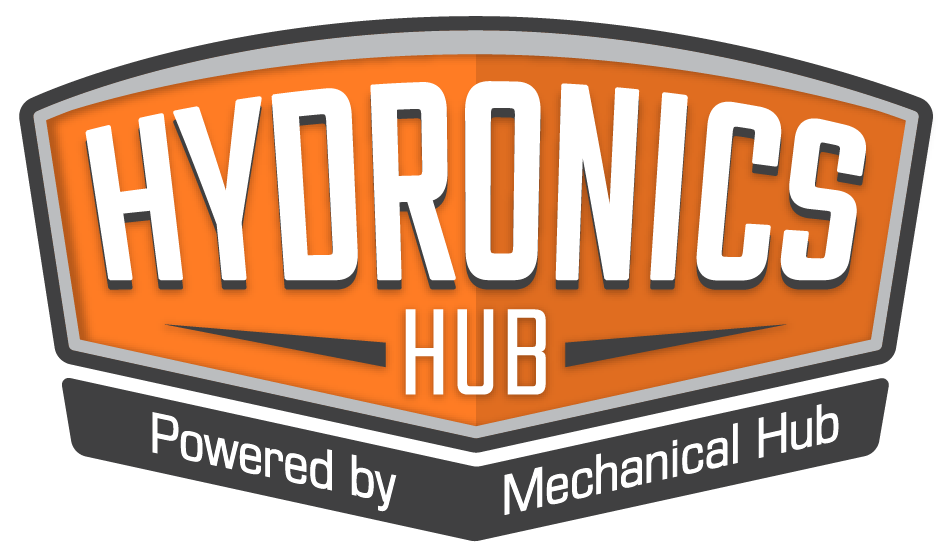https://youtu.be/XDv7qrBBZdg Mechanical Hub takes you to Salt Lake City as they visit with Bob Dudley, co-owner, Harris-Dudley Plumbing & Heating. Bob talks about the company and its reliance on snow. A great part of his business in providing radiant, hydronics and snowmelt systems to the Park City clientele Read more
Featured Articles
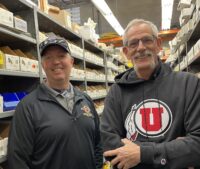
Mechanical Hub takes you to Salt Lake City as they visit with Bob Dudley, co-owner, Harris-Dudley Plumbing & Heating. Bob talks about the company and its reliance on snow. A great part of his business in providing radiant, hydronics and snowmelt systems to the Park City clientele.

Mechanical Hub continues with its 2023 Industry Forecast series with an exclusive interview with Caleffi North America’s president Mark Olson. Despite all of the negativity, Caleffi remains optimistic throughout all of the bumps in the road. MH: I’ve heard that the first half of 2023 might be a bit bumpy, how do you see Read more
 Mechanical Hub continues with its 2023 Industry Forecast series with an exclusive interview with Caleffi North America’s president Mark Olson. Despite all of the negativity, Caleffi remains optimistic throughout all of the bumps in the road.
Mechanical Hub continues with its 2023 Industry Forecast series with an exclusive interview with Caleffi North America’s president Mark Olson. Despite all of the negativity, Caleffi remains optimistic throughout all of the bumps in the road.
MH: I’ve heard that the first half of 2023 might be a bit bumpy, how do you see 2023 shaking out and the short-term economy in the U.S.?
OLSON: The economy is slowing; however, orders are expected to remain healthy through Q1 as building projects are completed. In Q2, we expect orders to slow to probably a little less than last year’s intake rate. A primary factor is the abrupt drop in single-family construction from the quick rise in mortgage rates. However, we anticipate continued investment in homeowner refurbishment will be offsetting—there is still healthy excess personal savings out there for people to invest in their homes. Another additional factor is wholesalers are reducing their DOS as the supply chain is catching up on availability.
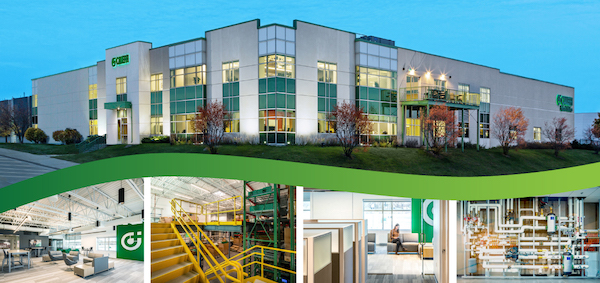
In the commercial marketplace, we expect activity will remain strong throughout 2023. Building projects have alternate sources of financing not constrained by high interest rates. Residential multi-family will stay robust before slowing some around the middle of the year.
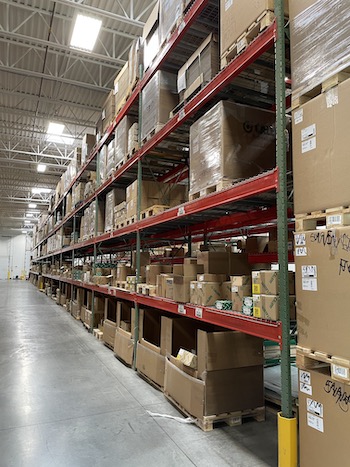 MH: What causes you concern? (Steady inflation, materials pricing, supply chain, housing starts, interest rates, foreign factors, etc.)
MH: What causes you concern? (Steady inflation, materials pricing, supply chain, housing starts, interest rates, foreign factors, etc.)
OLSON: We do not have much concern honestly, outside of a belligerent foreign act that triggers a deep recession. The supply chain is healing and we expect inflation will continue falling through the year.
MH: Are you seeing any signs of positivity? If so, where?
OLSON: Yes! A consensus among manufacturers is that the long-term outlook for the economy remains good. Future infrastructure spending by the government such as enhanced electrical distribution and port infrastructure investments are examples. Reshoring manufacturing back to the U.S. will drive employment opportunities with product demand to follow.
MH: Obviously, Caleffi is dependent on a global market as well. What are some indicators globally that are cause for concern and/or optimism?
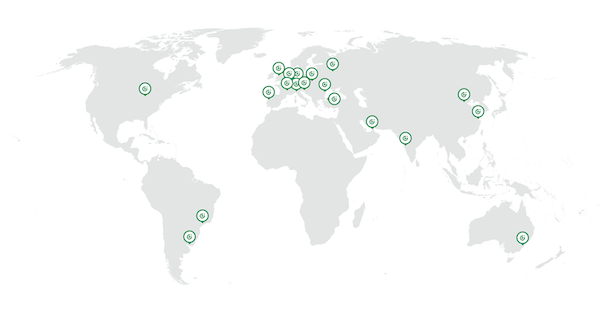
The global growth of Caleffi
OLSON: OPTIMISM wins! Our global rolling 2-month order intake rate exceeds 2022’s record pace. We are investing heavily in manufacturing expansion. Availability of energy in Europe is rapidly sorting out. In addition, the shift in Europe to electrification, accelerated by the Ukraine invasion, has created opportunities for new, innovative hydronic solutions. Caleffi is eager to meet this opportunity with energy savvy hydronic products.
MH: As it relates to contractors, what is your “message” to them as it relates to your company and its line of products and services?
 OLSON: We pick up the phone! Engineers, wholesalers, reps, contractors, it does not matter! Our “Ask Caleffi” Technical support team, with over 150 combined years’ of experience in the industry, is available real-time to answer calls and emails. Caleffi wants to be a business partner of choice. Contractors can count on our level of experience, expertise and our commitment to Excellence in Education to help make their job easier!
OLSON: We pick up the phone! Engineers, wholesalers, reps, contractors, it does not matter! Our “Ask Caleffi” Technical support team, with over 150 combined years’ of experience in the industry, is available real-time to answer calls and emails. Caleffi wants to be a business partner of choice. Contractors can count on our level of experience, expertise and our commitment to Excellence in Education to help make their job easier!
MH: What specifically does Caleffi have its sights set on in 2023? (New products, working with associations, for workforce development, etc.)
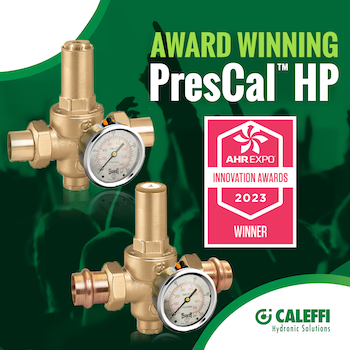 OLSON: Caleffi is kicking off the year at AHR with the 536 Series PresCalTM HP which has been recognized by the Innovation Awards judges as the 2023 INNOVATIVE PLUMBING product winner! We’ll be exhibiting in our biggest Booth ever in Atlanta, where visitors can literally look inside of our quality products.
OLSON: Caleffi is kicking off the year at AHR with the 536 Series PresCalTM HP which has been recognized by the Innovation Awards judges as the 2023 INNOVATIVE PLUMBING product winner! We’ll be exhibiting in our biggest Booth ever in Atlanta, where visitors can literally look inside of our quality products.
Spoiler alert: We will be soon launching a revolutionary union sealing technology with Posi-StopTM (stay tuned!).
We are increasing investment in the professional development of our staff.
Did we mention that we are GROWING? In fact, we are nearly tripling our inventory carrying capacity in Milwaukee during the next phase of our building expansion starting later this year.
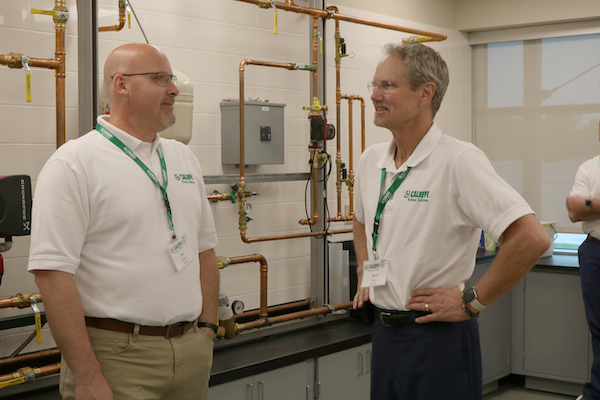
Dan Firkus (l) talks with the prez Mark Olson.
Caleffi is proud to expand its industry engagements with the American Society for Health Care Engineering (ASHE), American Backflow Prevention Association (ABPA) and the Advanced Water Heating Initiative (AWHI).
MH: Any unique training opportunities for 2023?
OLSON: Watch for training opportunities facilitated by our Caleffi staff and Manufacturer’s Representatives in YOUR neighborhood, making it easy to connect and learn with in-person and LIVE virtual settings.
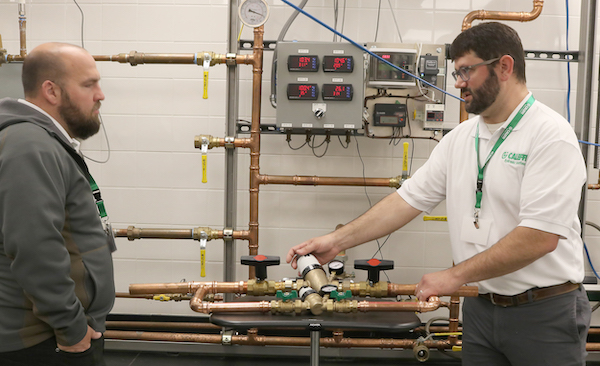
Gregg Tubbs (r) gives a demo to a visiting contractor.
In 2020, the heart of the latest expansion in Milwaukee was the incorporation of unique work environments that can be transformed into large spaces for training and workshop events. Caleffi will be offering Academy sessions in 2023 designed especially with the engineer and contractor in mind. Stay tuned!
And… don’t worry! The industry can count on the continuation of Caleffi’s commitment to Excellence in Education including idronicsTM, a complimentary design journal for hydronic and plumbing pros, with its just released 32nd edition: Troubleshooting Hydronic Systems.
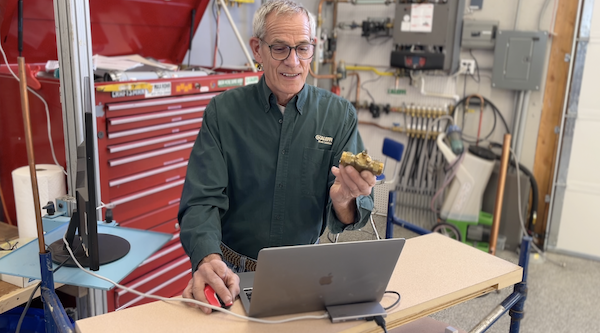
Bob ‘Hot Rod’ Rohr during the wildly popular Coffee with Caleffi.
Coffee with CaleffiTM, a popular monthly webinar series that features our trainers and industry guest speakers, continues into its 14th year.
Our Ask Caleffi team hosts an engaging podcast series intended for contractors tasked with solving tricky system problems and are looking for answers!
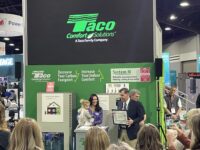
Loss, love, life. In what was an extremely tough time, the Taco community gathered at the AHR Expo for the Dan Holohan Award for Comfort, which was presented posthumously to John White III who passed away unexpectedly last year—to his wife and daughter. As Dan Holohan aptly stated, comfort can be projected outward, and JWIII Read more
Loss, love, life. In what was an extremely tough time, the Taco community gathered at the AHR Expo for the Dan Holohan Award for Comfort, which was presented posthumously to John White III who passed away unexpectedly last year—to his wife and daughter. As Dan Holohan aptly stated, comfort can be projected outward, and JWIII did just that, always concerned about how you were first while giving you a big ol’ bear hug.
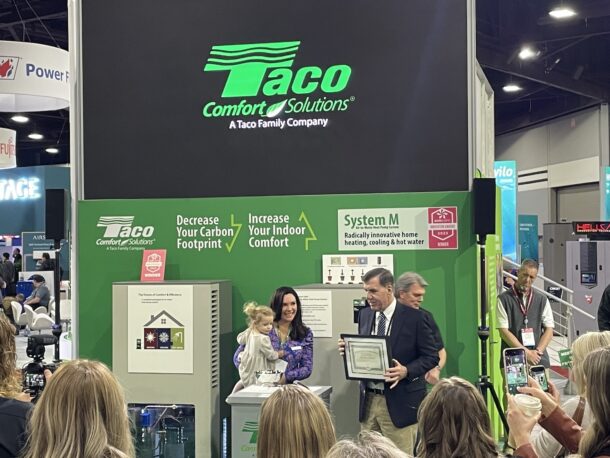
Dan Holohan gives the award to John III’s wife, Katelyn, and daughter Madison Marie.
John was born in Providence, RI on September 30, 1987. He was a graduate of Moses Brown School in Providence and Wheaton College in Norton, MA. He began his career with Taco during his high school years, starting in maintenance and working his way through many departments. His experience also included a position with B.J. Terroni Company in Bensalem, PA. His Taco career path led to his most recent position as SVP, North American OEM Sales. He was loved by Taco employees and his customers as much as he loved them.
Everyone who knew John experienced his caring, big-hearted personality and sense of humor. He had a passion for creative writing, reading, traveling, and most of all spending time with friends and his family. He was most proud to be the husband to Katelyn White, and father to his daughter, Madison Marie.
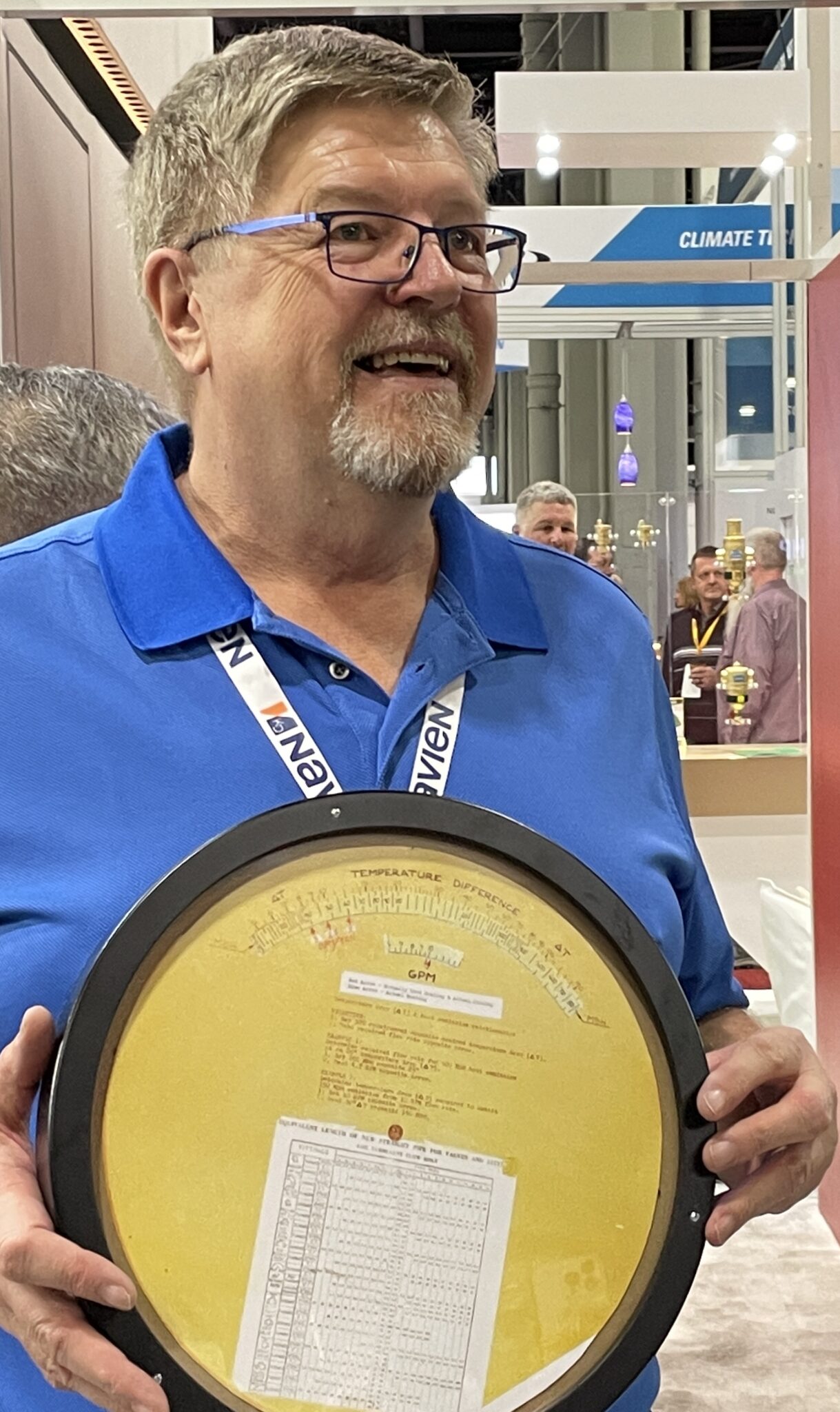 Over in the Caleffi booth, another award—with Dan Holohan’s name on it—was passed. The Holohan/Carlson Award, awarded to those who exemplify the highest standards and practices in the hydronics industry, was passed on from previous winner Bob “hot rod” Rohr to a very surprised and humble Dave Hughes who worked at the Northern Alberta Institute of Technology (NAIT) and serves as a technical advisor for the Canadian Institute of Plumbing & Heating (CIPH).
Over in the Caleffi booth, another award—with Dan Holohan’s name on it—was passed. The Holohan/Carlson Award, awarded to those who exemplify the highest standards and practices in the hydronics industry, was passed on from previous winner Bob “hot rod” Rohr to a very surprised and humble Dave Hughes who worked at the Northern Alberta Institute of Technology (NAIT) and serves as a technical advisor for the Canadian Institute of Plumbing & Heating (CIPH).
Hughes has more than 40 years of experience in the plumbing and heating industry and has worked with gas, boiler systems, solar thermal water heating systems, radiant floor heating systems, hydronic system controls, and residential and commercial hydronic system design. He has served as chair of the Canadian Hydronics Council, and vice-chair of the CSA B214 Technical Committee. Active in the hydronics industry, Dave spearheaded the creation and implementation of the CHC Certified Hydronic Designer and Hydronic Installer programs.
Hughes is a specialist at installing and designing hydronic systems for in-floor heating and manages FW&U Consulting, a firm specializing in technical training for pipe trades.
The Carlson-Holohan Industry Award of Excellence honor is bestowed upon an American or Canadian citizen, are based upon the character traits of Gil Carlson, mechanical engineer and inventor of the Bell & Gossett System Syzer and his protégé Dan Holohan, author, educator, humanitarian and Society member. Presented once every two years, the recognition is given to an individual known for their dedication to teaching, mentoring and raising funds for philanthropic causes on behalf of the steam and hydronic industry.
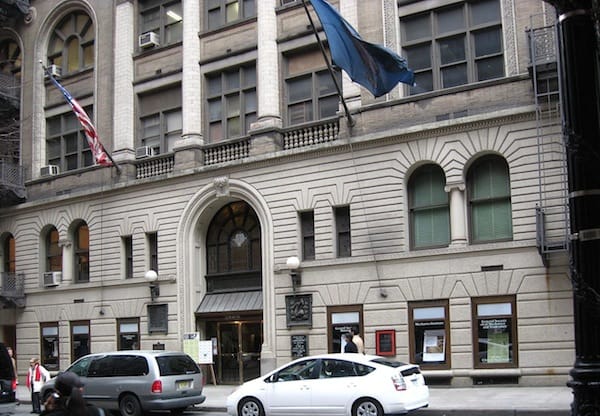
The real Carlson-Holohan Industry Award of Excellence sits in its permanent home at the General Society of Mechanics and Tradesmen of the City of New York.
Past winners Dan Holohan, Dave Yates, Robert Bean and Mark Eatherton, John Goshulak, Ingrid Mattsson, Hot Rod Rohr, John Barba and John Siegenthaler.

AHR 2023 is a wrap, and the biggest U.S. HVAC show marks the 20th time—minus the COVID year—that I have attended this great event. A huge shoutout to the Stevens family for organizing such a great experience. Also, huge props to Nicole Bush and her press team for helping the trade press throughout the event Read more
AHR 2023 is a wrap, and the biggest U.S. HVAC show marks the 20th time—minus the COVID year—that I have attended this great event. A huge shoutout to the Stevens family for organizing such a great experience. Also, huge props to Nicole Bush and her press team for helping the trade press throughout the event, and keeping them fed and hydrated.
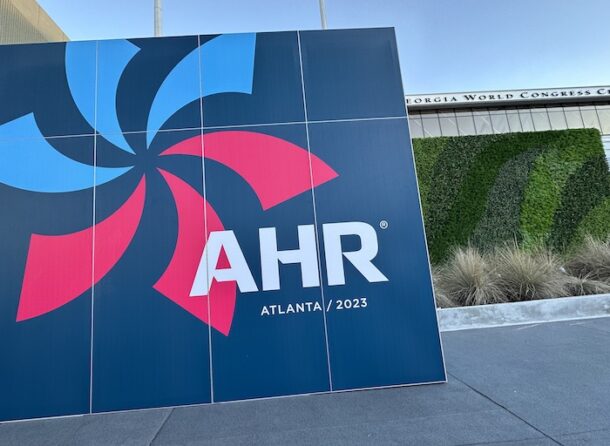
Now that we’re all back home safely—I hope—we can digest the event and gain a better perspective of what transpired over these past three days. The numbers haven’t been shared yet attendance-wise, but it was a hugely successful event, especially coming through what some call the “COVID years,” where traveling came to a stop—with more people now connecting again.
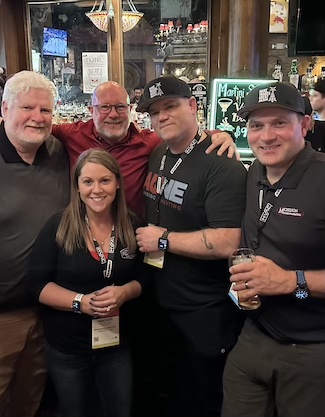
The MH team, and some old guy.
I would be remiss if I didn’t mention some of the manufacturers’ investment in after parties that are always a hit! For the Mechanical Hub crew, for example, it was Taco, Burnham/U.S. Boilers, Rheem, RLS, Franklin Electric, RIDGID and Viega.
From what I heard, over and over again, is that Atlanta just isn’t the most optimum place for a trade show, if I can be perfectly honest. Listen, Atlanta is a wonderful city with plenty to do and many fine places to eat and drink, but the traffic, and the infrastructure to support such a trade show, need to improve. But hey, it was 65 degrees and sunny, and relatively quick flight to the show. So, I suppose it does have its advantages. Where does Atlanta rank for you? Atlanta, Chicago, Orlando, Las Vegas. Perhaps it should be noted that the sooner you book accommodations for a show, the more strategically you will be for rides, dinners, walking, etc.
Nevertheless, I can’t tell you how many people sniped about the layout of the show floor—getting from one end of Exhibit Hall C, and its meeting rooms, to the other end of Exhibit Hall B, and its meeting rooms was a hike. My feet, and the 55,000 steps according my trusty Fitbit, were a testament to that.
Also, as I mentioned, 20 years of covering the event, it’s nice to see the changing of the guard with some young talent in attendance, more pointedly—and I know some don’t like to be referred to as this—social influencers. They cover the floor tirelessly to promote the show and new products. In fact, I was lucky enough to attend the social media breakout on the last day. Ten of the brightest influencers graced the stage to talk about their experiences and the importance of social media, and what it means to be an influencer.
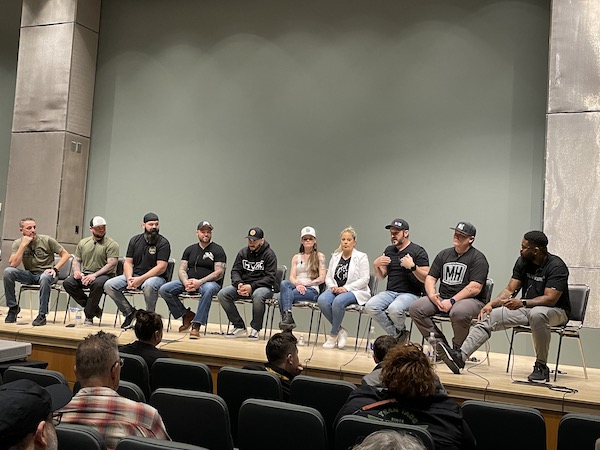
HVAC & Social Media: Strengthening the Trade with a Community Mindset—from l to r: Ben Poole @hvactactical, Jamie Christensen @northwest_hvac, Aaron Bond @bond_aaron, Michael Flynn @flynnstone1, Jeff DeMassari @jeffjdemhvac, Jessica Bannister @hvacjess, Rachel Sylvain @hvacrara, Chris Stephens @hvacrvideos, Eric Aune @mechanicalhub, and last but not least, Omar Harris @omartheplumber.
We also were fortunate to share the stage with some of the best podcasters on the planet, as our Make Trades Great Again, hosted by Eric Aune and Andy Mickelson, featured three podcasts during show hours to much fanfare. Guests included representatives from RIDGID, NIBCO, Navien and guest Travis Albaire, T.A.P. Plumbing and Heating. Check them out wherever you stream. Also, the Appetite for Construction podcast, hosted by John Mesenbrink and Tim Ward, featured two podcasts, which featured guests from Bradford White, Rheem, Spirotherm, Lochinvar, and Danny G and Louie the Boiler Man. These recording will be launched within a couple of weeks. In the meantime, check out these podcasts wherever you like to stream stuff, or you can always find them right here on our site.
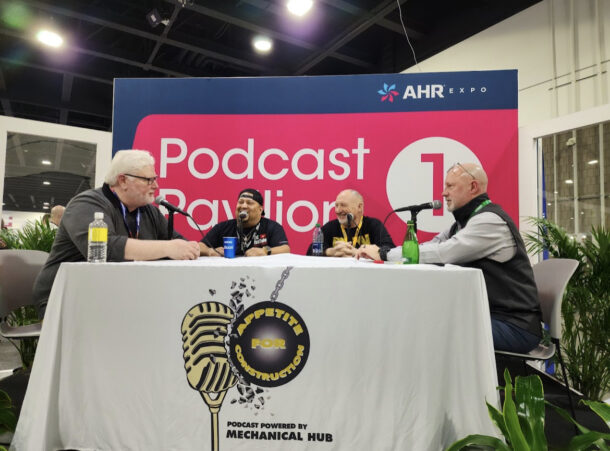
The Appetite for Construction Podcast with guests Louie Medina @louietheboilerman and Danny Gronendyke @howitbewithdannyg
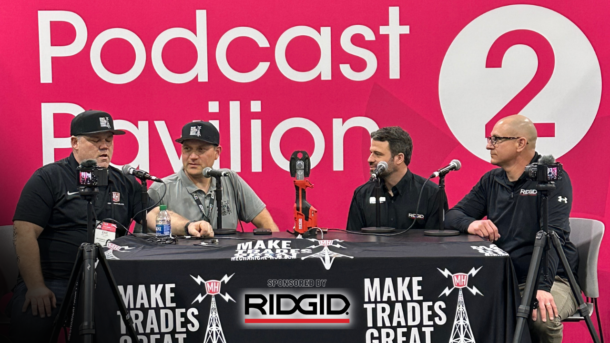
The Make Trades Great Again Podcast with guests Michael Provenzano, director of pressing and Jim Vild, Atlanta territory manager, RIDGID.
As far as the latest and greatest, you couldn’t get far without seeing the future. Electrification, decarbonization, hydrogen technology are making waves as more heat pumps, electric furnaces, electric boilers, hybrid heat pumps and prefabbed distributed pumping methods are front and center; the latest in thermostats, and a plethora of other products that can talk to each other, and you, with a WiFi signal—from circulators, forced air furnaces to tankless water heaters. New or improved pipe joining methods through press technology, push-to-connect fittings, fusion welding, advances in pipe bending and cutting drew eyes. Listen, if it’s in the HVAC industry, it’s at AHR.
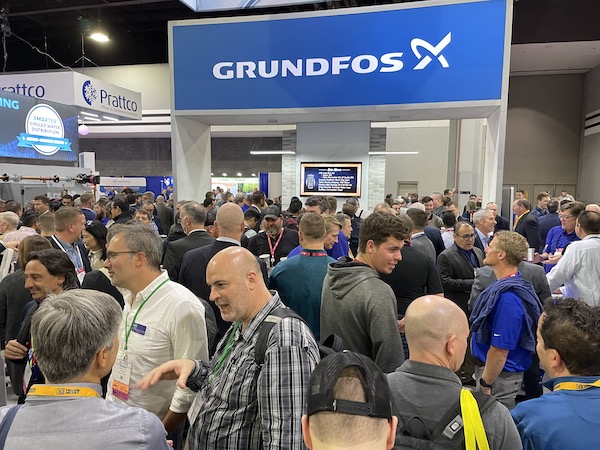
Check out Mechanical Hub websites, social media (@mechanicalhub & @plumbing_perspective on Instagram and TikTok, Facebook and LinkedIn.) and check out our ever-growing YouTube for products from the show.
Next year’s AHR Expo will take place in Chicago, my back yard, January 21-24 (2024). Again, check back for updates on the show or any other breaking announcements surrounding the event.

As we move into the first quarter of 2023, the trade show circuit is in full effect, and the Mechanical Hub team will be present at all of the events, starting with World of Concrete next week. The buzz is strong moving from the post-COVID drag to in-person connection again that includes all shows from Read more
As we move into the first quarter of 2023, the trade show circuit is in full effect, and the Mechanical Hub team will be present at all of the events, starting with World of Concrete next week. The buzz is strong moving from the post-COVID drag to in-person connection again that includes all shows from January through March.
World of Concrete (January 17-19, Las Vegas) — This show has been serving the concrete and masonry construction industries for nearly 50 years. Why does Mechanical Hub attend? Tools baby! The leaders in the tool industry—that delve into the concrete side of things—are all there and great conversations and connections can be made there. And, it’s Vegas. I’m sure you can find something fun to do there, right?
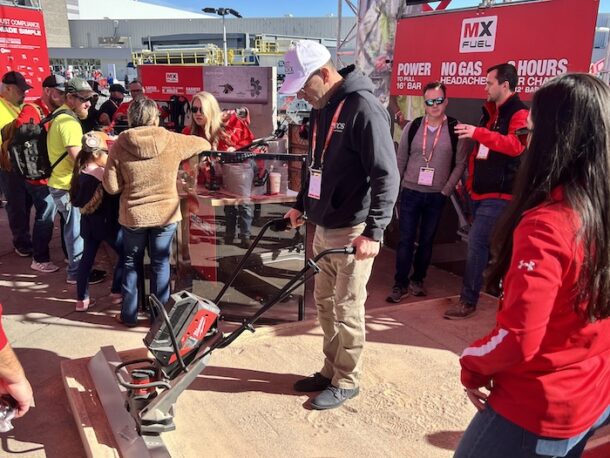
KBIS/IBS (January 31-February 2, Las Vegas) — Since co-locating back in 2014, this really is a can’t-miss show. Combing the Kitchen & Bath Industry Show (KBIS) and The International Builders’ Show (IBS) was a huge boon to both of these prior individual shows. Combing forces is like watching Hanna-Barbara’s Wonder Twins “activate” in the form of a leading national trade show every year. Finding the latest in kitchen and bath trends with the latest and greatest from the building world? Um, yes please.
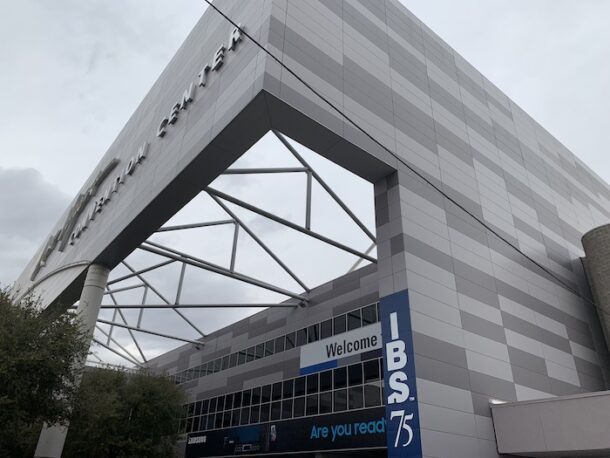
AHR Expo (February 6-8, Atlanta) — If I could count the amount of steps I have amassed over the years walking this show floor, I probably would have worn more comfortable shoes from the beginning. This is the largest annual U.S. HVACR trade show and you will not be disappointed with how much there is to see and do at this event—from seeing the latest technology and products visiting with manufacturers at their booths to the educational tracks offered. BTW, Mechanical Hub’s two podcasts will be broadcasting from the AHR Podcast Pavilions, so if you’re at the show, be sure to stop by and say hello. (Appetite for Construction Podcast Monday, Feb. 6 at 5:00 pm, pavilion 2; Tuesday, Feb. 7 at 4:00 pm, pavilion 1. Make Trades Great Again Podcast Monday, Feb. 6 at 2:00 pm, pavilion 2; Tuesday, Feb. 7 at 11:00 am, pavilion 1; Tuesday, Feb. 7 at 1:00 pm, pavilion 2.)
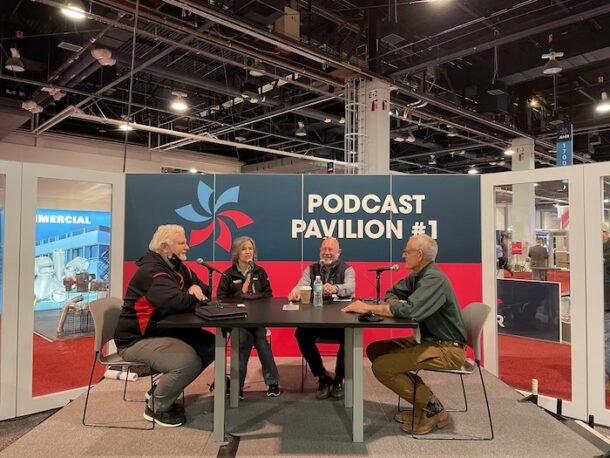
WWETT Show (February 20-23, Indianapolis) — Man, we love going to this show as well. So many connections made, such a great time. The Water & Wastewater Equipment, Treatment & Transport Show—a mouthful so let’s just call it WWETT—is the world’s largest annual trade show for wastewater and environmental service professionals. This show offers educational programs, live demos, the latest in drain cleaning technology, and the opportunity to connect with fellow industry showgoers. For those that can remember that far back, this was the old pumper and dumper show.
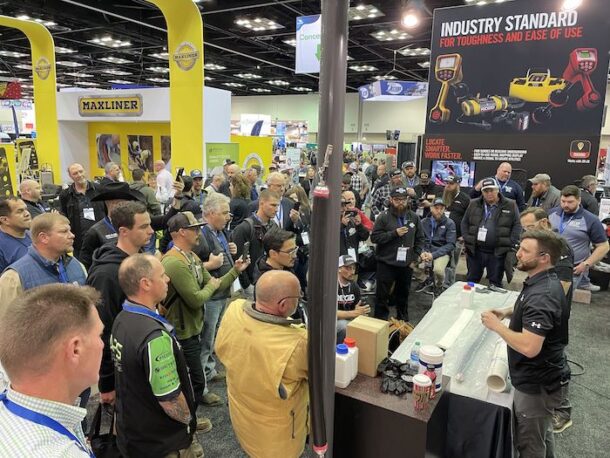
ISH Messe Frankfurt (March 13-17, Frankfurt, Germany)—Guten tag from Deutschland! The Mechanical Hub team will be making the jump over the pond to attend one of the world’s largest biennial (every two years) PHVACR trade show. The focus of this year’s ISH is marketable solutions for a sustainable future. Currently, the organizers are expecting around 2,000 companies to present their solutions for renewable sources of energy, sustainable water usage and clean air at the leading international trade event for the HVAC and water sector.
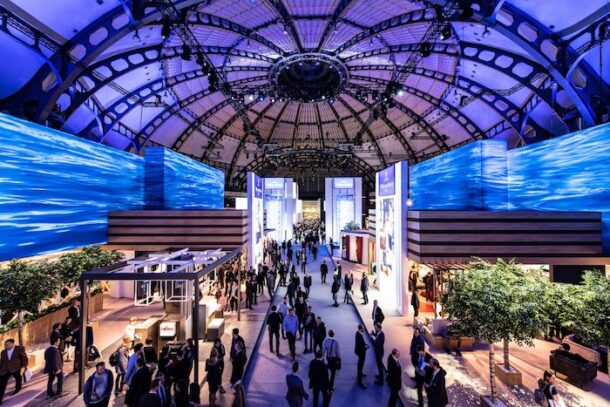
ISH 2023 will offer the ISH digital extension, a virtual presence that will open in parallel to the live event in Frankfurt and will also remain open for one week longer until March 24, 2023.
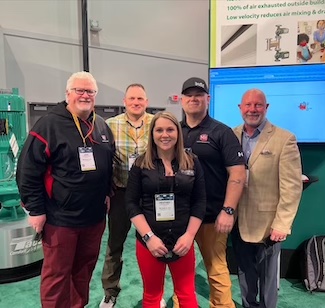 Pre-COVID, ISH was so popular, more space was allotted to the already mammoth 12 building campus. According to the ISH website, the show is the largest exhibition venue in the world for product innovations, and it occupies an area equal to approximately 39 football pitches. Thank goodness for Ted Lasso, because we now know that pitches mean soccer fields. We’ll need to brush up on our German for sure as the MH team will be traveling the countryside after the show, visiting with some key clients.
Pre-COVID, ISH was so popular, more space was allotted to the already mammoth 12 building campus. According to the ISH website, the show is the largest exhibition venue in the world for product innovations, and it occupies an area equal to approximately 39 football pitches. Thank goodness for Ted Lasso, because we now know that pitches mean soccer fields. We’ll need to brush up on our German for sure as the MH team will be traveling the countryside after the show, visiting with some key clients.
Hope to see you on the road!
